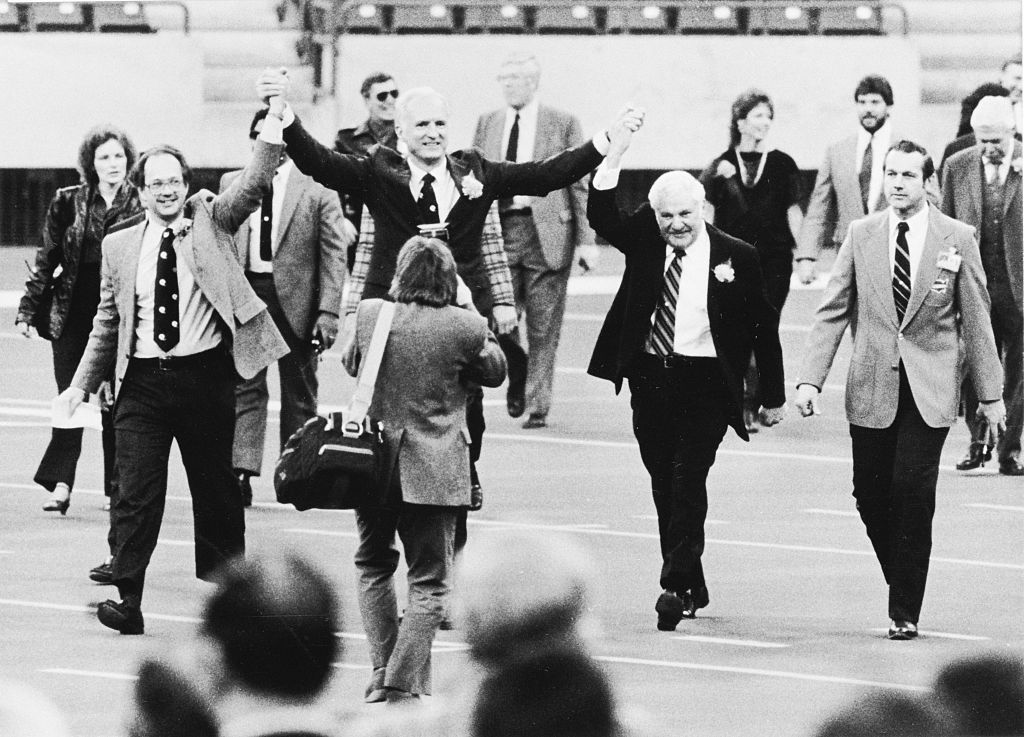The Midnight Move: How the Colts Left Baltimore and Transforme...
The Midnight Move: How the Colts Left Baltimore and Transformed Indianapolis

The Midnight Move: How the Colts Left Baltimore and Transformed Indianapolis
In the annals of professional sports, few stories are as dramatic and consequential as the relocation of the Colts franchise.
It’s a narrative filled with political gambles, clandestine operations, and the starkly different emotions of two great American cities.
The 93.1 WIBC special, “A Tale of Two Cities and One Team,” masterfully captured the essence of this historic event, detailing how one city’s heartbreak became another’s catalyst for transformation.
Before the Mayflower vans ever rumbled out of Maryland, the relationship between the Baltimore Colts and their city was fracturing.
Owner Robert Irsay, who acquired the team in a unique franchise swap in 1972, grew increasingly frustrated with the aging Memorial Stadium.
His lobbying for a new, modern facility fell on deaf ears in the Maryland legislature. By the early 1980s, the bond between the city and its beloved football team was strained to a breaking point.
The team’s performance on the field reflected the turmoil.
The 1982 season ended without a single win, and fan apathy grew.
Even drafting future Hall of Famer John Elway in 1983 couldn’t mend the rift, as he refused to play for the Colts and was subsequently traded.
The 1983 season was played under a cloud of uncertainty, with dismal attendance and players feeling like “the second class franchise of the city” behind the Baltimore Orioles.
As former linebacker Barry Krause recalled, the situation was difficult, and the rumors of a move grew stronger each day.
While Baltimore struggled to keep its team, Indianapolis was a city in search of an identity.
Known derisively as “Naptown” or “India-no-place,” the city’s leadership was determined to change its image.
Mayor William Hudnut championed an ambitious and risky strategy: use sports as a catalyst for economic development.
The centerpiece of this vision was the Hoosier Dome.
In a move that many outsiders considered bewildering, the city began constructing a state-of-the-art, NFL-ready stadium in 1982 with no guarantee of a team to play in it.
Mayor Hudnut and other civic leaders justified the massive political and financial risk by linking the dome to the convention center, but the unspoken goal was clear: to lure a major league franchise.
They were building a field of dreams, hoping a team would come.
Initial talks with Robert Irsay in the late 1970s proved fruitless.
However, as Irsay’s relationship with Baltimore soured, Indianapolis remained a persistent and prepared suitor.
The end came swiftly and suddenly in March 1984.
Frustrated by Irsay’s public flirtations with other cities like Phoenix and Jacksonville, the Maryland legislature made a fateful move.
On March 27, the state Senate passed legislation that would allow the city of Baltimore to seize ownership of the Colts through eminent domain.
This act, intended to keep the team in Baltimore, had the opposite effect.
It forced Irsay’s hand.
As Colts counsel Michael Chernoff famously said, “They put a gun to his head and cocked it.”
Late on March 28, 1984, Irsay agreed to a deal with Indianapolis.
Mayor Hudnut called his friend and neighbor, John Smith, the CEO of Mayflower Moving Company.
The order was given: get the team out of Maryland before the state’s House of Delegates could pass the eminent domain bill and the governor could sign it into law.
What followed was a scene straight out of a spy thriller.
Under the cover of a snowy, dark night, a fleet of 15 Mayflower trucks descended on the Colts’ training complex.
Team employees, many of whom were completely unaware of the move, hastily packed everything from trophies and equipment to office files and personal belongings.
To avoid being stopped by Maryland State Police, the trucks took different, circuitous routes out of the state.
Once they crossed into Indiana, they were met by state troopers who escorted them the rest of the way to Indianapolis.
By the morning of March 29, the Baltimore Colts were gone.
The team complex was a ghost town, leaving behind stunned employees, heartbroken fans, and a city in disbelief.
For Indianapolis, the arrival of the Colts was a watershed moment.
A welcome rally at the still-unfinished Hoosier Dome drew 20,000 cheering fans.
The city was electric.
The move validated the risky decision to build the dome and instantly elevated Indianapolis to “big league” status.
It triggered a downtown renaissance, spurring the development of hotels, restaurants, and a vibrant urban core that had been languishing for decades.
The Hoosier Dome, later connected to the convention center, became a magnet for major events like the NCAA Final Four, eventually leading the NCAA to relocate its headquarters to the city.
For Baltimore, the move left a deep and bitter wound.
The anger was directed squarely at Robert Irsay.
The loss of the team’s name and history to Indianapolis was a particularly painful blow.
Legendary Baltimore Colts players like Johnny Unitas made it clear their loyalty remained with Baltimore, not the relocated franchise.
The city endured years without an NFL team before finally landing the Cleveland Browns franchise in 1996, which was renamed the Baltimore Ravens.
While time and the success of the Ravens have helped heal some wounds, the memory of the midnight move remains a defining part of both cities’ histories.
It stands as a powerful testament to how preparation met opportunity, forever changing the fortunes of two cities and one team.



